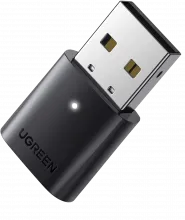Bluetooth dongles are nifty little devices that enable wireless connectivity for various peripherals and devices. They are commonly used for connecting wireless headphones, keyboards, mice, and other gadgets to your computer. However, like any technology, Bluetooth dongles can sometimes encounter problems. In this article, we will guide you through troubleshooting common Bluetooth dongle issues to get your wireless connections back on track.
Bluetooth dongles are nifty little devices that enable wireless connectivity for various peripherals and devices. They are commonly used for connecting wireless headphones, keyboards, mice, and other gadgets to your computer. However, like any technology, Bluetooth dongles can sometimes encounter problems. In this article, we will guide you through troubleshooting common Bluetooth dongle issues to get your wireless connections back on track.
1. Check for Physical Connections:
- Ensure that the Bluetooth dongle is securely plugged into an available USB port on your computer. Sometimes, a loose connection can lead to connectivity problems.
2. Power Cycle the Dongle:
- Unplug the dongle from your computer and wait for about 10 seconds. Then, plug it back in. This simple reset can resolve minor connectivity issues.
3. Check Dongle Compatibility:
- Verify that your Bluetooth dongle is compatible with your operating system. Some dongles may not work with specific versions of Windows, macOS, or Linux.
4. Update or Reinstall Drivers:
- Outdated or corrupted drivers can cause Bluetooth problems. Visit the manufacturer's website to download and install the latest drivers for your specific dongle model.
5. Enable Bluetooth on Your Computer:
- Ensure that the Bluetooth feature on your computer is turned on. On Windows, you can do this through the settings menu. On macOS, check the Bluetooth icon in the menu bar.
6. Pairing Issues:
- If you're having trouble pairing a device, ensure that it's in pairing mode. Refer to the device's user manual for instructions on how to enable pairing mode.
7. Bluetooth Interference:
- Other electronic devices and Wi-Fi networks can interfere with Bluetooth signals. Keep your dongle and connected devices away from potential sources of interference.
8. Check Device Battery:
- If your Bluetooth device has a low battery, it may not connect or stay connected. Charge or replace the batteries as needed.
9. Bluetooth Settings:
- In your computer's Bluetooth settings, ensure that Bluetooth is discoverable and set to allow new connections. Also, check that your device isn't hidden or blocked from connecting.
10. Update Dongle Firmware:
- Some Bluetooth dongles have firmware that can be updated to address known issues. Check the manufacturer's website for firmware updates.
11. Remove Conflicting Software:
- Uninstall any third-party Bluetooth management software that may interfere with your dongle. Stick to the default Bluetooth settings provided by your operating system.
12. Restart Bluetooth Services:
- On Windows, you can restart the Bluetooth service by typing "services.msc" into the Run dialog and restarting the Bluetooth Support Service.
13. Consider a Different USB Port:
- Plug your Bluetooth dongle into a different USB port. Sometimes, changing the port can resolve connectivity issues.
14. Test with Another Device:
- To isolate the problem, try pairing your Bluetooth dongle with another device, such as a smartphone or tablet, to see if the issue persists.
15. Disable Built-in Bluetooth:
-
If your computer has built-in Bluetooth functionality, you may need to disable it to prevent conflicts with the external Bluetooth dongle. Here's how to do it on different operating systems:
-
Windows:
- Open the "Device Manager" by right-clicking on the Start button and selecting "Device Manager."
- Locate the "Bluetooth" category in the Device Manager and expand it.
- Right-click on the internal Bluetooth adapter and select "Disable device" or "Disable."
-
macOS:
- Click the Apple menu and go to "System Preferences."
- Select "Bluetooth."
- Click the "Turn Bluetooth Off" button.
-
Linux:
- The process can vary depending on your Linux distribution. In many cases, you can disable the internal Bluetooth using terminal commands or through your system's settings.
-
Disabling the built-in Bluetooth will ensure that your external Bluetooth dongle takes precedence and minimizes the chances of conflicts between the two. If you encounter any issues or need specific instructions for your operating system, consult your computer's documentation or online resources for guidance.
16. Seek Manufacturer Support:
- If all else fails, contact the manufacturer's customer support for further assistance. They may provide additional troubleshooting steps or offer a replacement if the dongle is defective.
Remember that Bluetooth dongles can vary in quality, and issues can sometimes arise due to hardware limitations. However, by following these troubleshooting steps, you can often diagnose and resolve common Bluetooth dongle problems, ensuring a seamless wireless experience with your devices.
